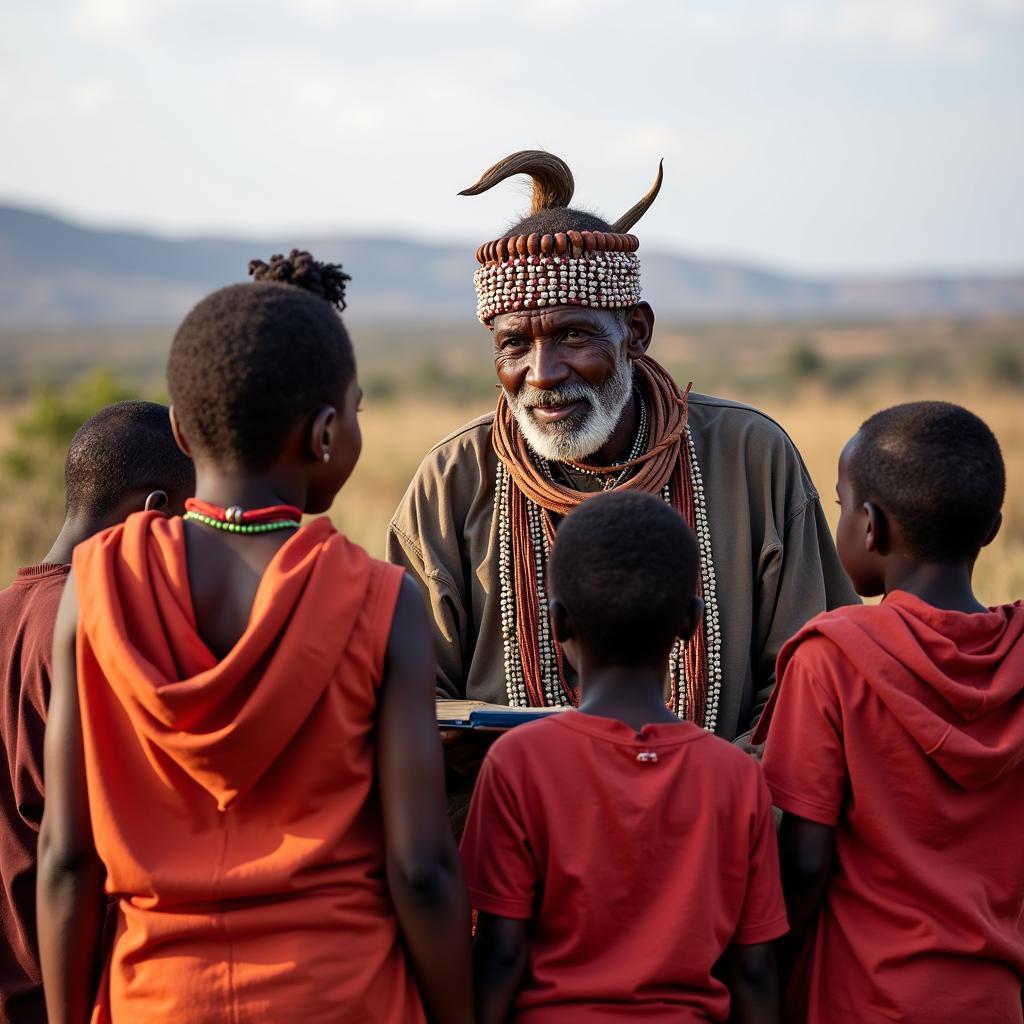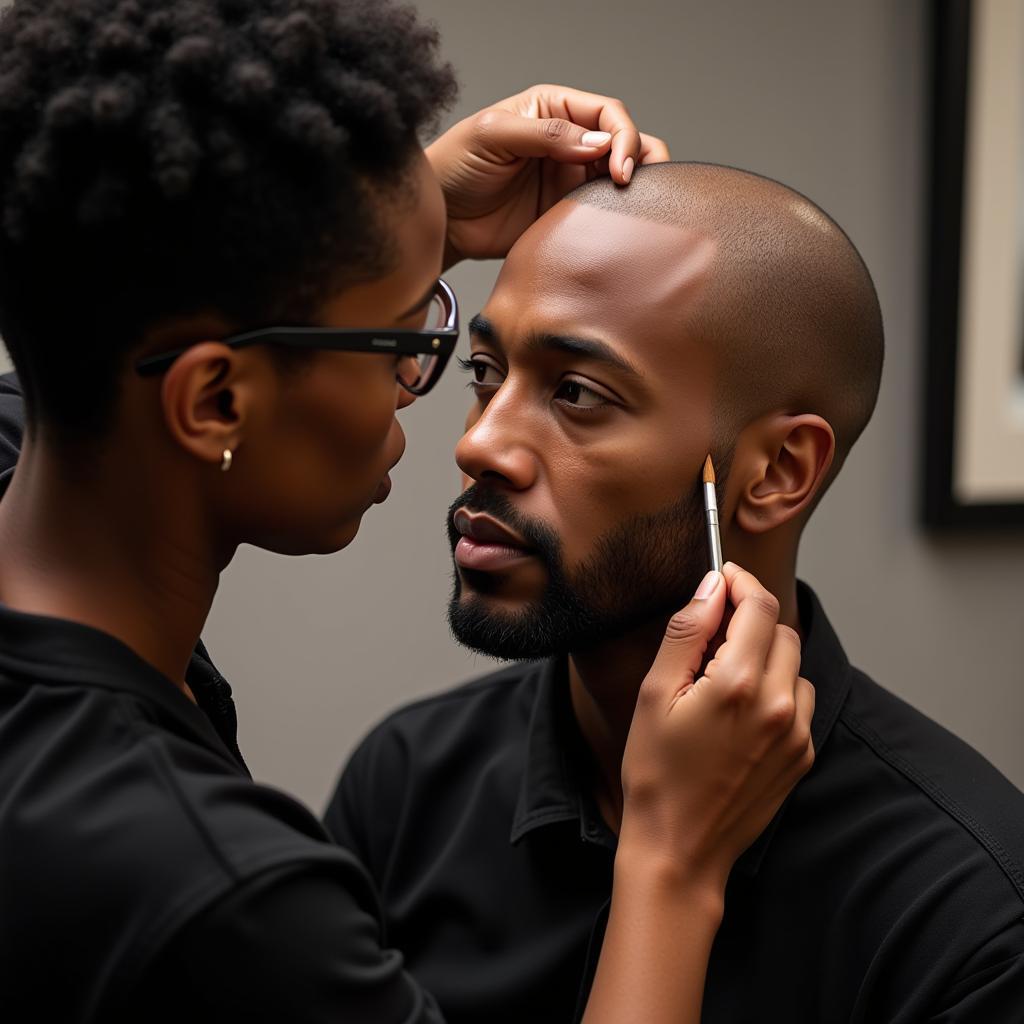Capturing Cultures: The Power of African Tribal Photography
African Tribal Photography offers a captivating window into the diverse cultures, traditions, and ways of life of the continent’s many indigenous communities. These photographs, often imbued with vibrant colors, intricate details, and powerful emotions, capture the essence of African tribal identity and heritage. From the intricate body art and adornments to the elaborate ceremonies and rituals, african tribal photography provides a glimpse into worlds often unseen by outsiders.
The Significance of Visual Storytelling in Tribal Cultures
For centuries, African tribes have relied on oral traditions and visual arts to transmit their history, beliefs, and customs across generations. Photography, since its introduction to the continent, has been embraced as a powerful tool for documenting and preserving these rich cultural expressions.
 Tribal Elder Storytelling
Tribal Elder Storytelling
African tribal photography transcends mere aesthetics; it serves as a vital form of visual storytelling, conveying narratives of resilience, adaptation, and the enduring spirit of these communities.
Exploring the Diversity of African Tribal Photography
The beauty of African tribal photography lies in its remarkable diversity. Each tribe, with its unique customs and artistic expressions, offers a distinct visual language.
Portraying Identity and Heritage
Many photographs focus on showcasing the unique attire, adornments, and body art that signify tribal identity. From the striking red ochre body paint of the Himba people of Namibia to the elaborate beaded jewelry of the Maasai in Kenya and Tanzania, these images celebrate the beauty and diversity of African cultures.
Documenting Rituals and Ceremonies
African tribal photography also plays a crucial role in documenting important rituals and ceremonies.
Whether it’s a coming-of-age ceremony, a traditional wedding, or a spiritual ritual, these photographs offer insights into the beliefs, values, and social structures of different tribes. However, it’s crucial to approach these images with sensitivity and respect, understanding the cultural significance they hold.
Ethical Considerations in African Tribal Photography
While African tribal photography can be a powerful tool for cultural preservation and appreciation, it’s essential to engage with it ethically and responsibly.
- Consent and Collaboration: Always obtain informed consent before photographing individuals or communities. Collaborate with local guides and organizations to ensure respectful interactions.
- Avoiding Stereotypes: Be mindful of perpetuating harmful stereotypes or exoticizing tribal cultures. Focus on portraying the diversity and complexity of these communities beyond simplistic narratives.
- Economic Empowerment: Support local economies by hiring local guides, translators, and purchasing crafts directly from artisans. Ensure fair compensation for those involved in photography projects.
Beyond the Lens: Appreciating African Cultures
African tribal photography offers a captivating glimpse into the richness and diversity of the continent’s cultures. By approaching these images with sensitivity, respect, and a willingness to learn, we can deepen our understanding and appreciation for the vibrant tapestry of African Life.
Remember, these photographs are not just beautiful images; they are windows into the lives, stories, and traditions of real people. Let us engage with them responsibly, ensuring that our fascination translates into genuine respect and support for the preservation of these invaluable cultures.

